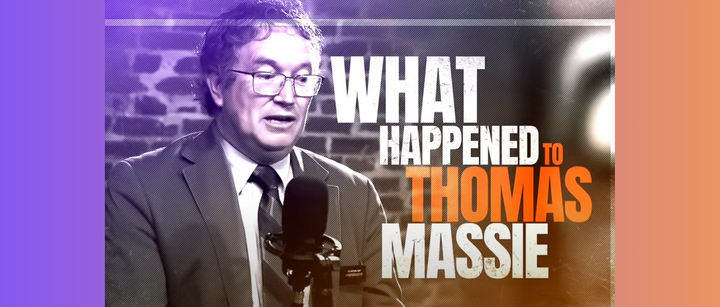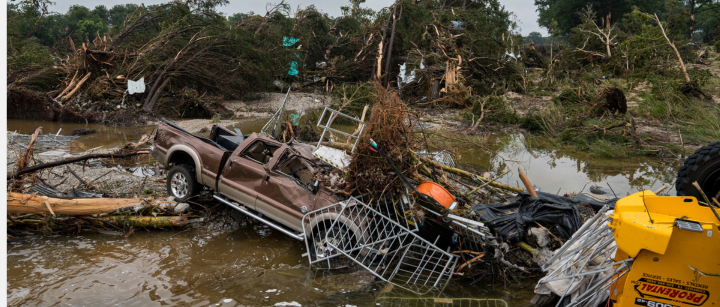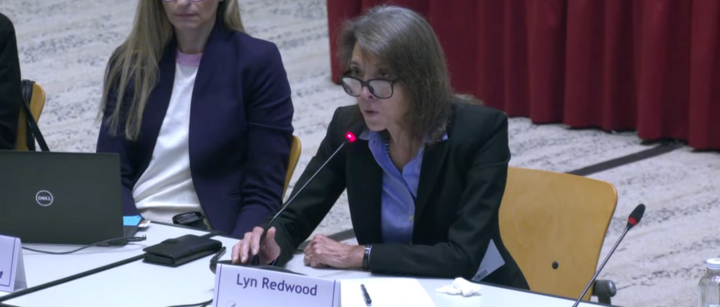MAGA Ad Distorts How Massie Diverges from Trump
Este artículo estará disponible en español en El Tiempo Latino. An attack ad by a super PAC called MAGA Kentucky targets Republican Rep. Thomas Massie — a longtime conservative foil of President Donald Trump — with claims that distort the congressman’s votes on some of Trump’s policy goals. The 30-second broadcast and digital ad, the first phase in a $1 million ad buy, according to Axios, began airing in late June in the northern Kentucky district where Massie is seeking reelection in 2026. The ad is titled “RADICAL DEMOCRATS,” and its narrator asks, “What happened to Thomas Massie? When did he decide to start voting with the radical Democrats? Massie voted against President Trump’s tax cuts. Massie voted against finishing Trump’s wall. Massie even voted against Trump’s ban on taxpayer-funded sex changes for minors.” The ad is referring to Massie’s votes against Trump’s One Big Beautiful Bill Act. Massie was one of only two Republicans to vote against the initial House version of the bill on May 22, and the final Senate version of the bill on July 3. Although the bill contained elements of all three issues highlighted in the ad, Massie’s opposition was based on the bill’s impact on the national debt. The ad singles out aspects of the bill that Massie has generally supported. During Trump’s first term, Massie voted for Trump’s Tax Cuts and Jobs Act in 2017, and he has said repeatedly that he supports extending tax cuts in it that were scheduled to expire at the end of this year. “Look, I’m for the tax cuts, extending those tax cuts. I voted for those in 2017,” Massie said in a May 20 interview on Newsmax2. “Here’s the problem: we’re cutting more taxes, and we’re increasing spending. And to the extent they say we’re cutting spending, that doesn’t happen in these first few years. They’re saying, ‘We’ll do that in the later years.’ The problem is the later years never come.” “There are a lot of good things in this bill,” Massie said in a Newsmax interview on June 11. “We do need to deport the people who’ve come to this country illegally. I do support renewing the 2017 Tax Cuts and Jobs Act that I voted for. But let me tell you what they’re not talking about … Number one issue, no tax on tips, no tax on overtime, the tax break for seniors, that all expires in three years. And that’s because they’re using a budget gimmick where they’re trying to say this thing balances five years from now. But it doesn’t balance now.” As for voting against “finishing Trump’s wall,” Massie has been a staunch supporter of building more border wall, though he has not always agreed with Trump’s method for funding it. In 2019, for example, Massie voted with Democrats to upend Trump’s attempt to fund the wall by declaring a national emergency. Massie argued that Congress, not the president, should decide on funding for construction of the border wall. But he also supported and voted to provide more than $5 billion to fund Trump’s border wall in fiscal year 2019. And in 2023, Massie co-sponsored H.R. 164, the Close Biden’s Open Border Act, which sought to provide $15 billion for border wall construction. As for the ad’s claim that Massie “even voted against Trump’s ban on taxpayer-funded sex changes for minors,” Massie has opposed gender-affirming surgery for children. Massie said in post on X after his vote: “Although there were some conservative wins in the budget reconciliation bill (OBBBA), I voted No on final passage because it will significantly increase U.S. budget deficits in the near term, negatively impacting all Americans through sustained inflation and high interest rates.” As we’ve written, multiple independent analyses have found that the legislation, which Trump signed into law on July 4, will add trillions of dollars to the federal deficit over 10 years. Massie had sought to amend the reconciliation bill to address federal jurisdiction in various cases of gender-affirming surgery. When the bill made its way through the Senate, according to Massie, the legislation allowed for funding of such medical procedures. Alluding to the MAGA Kentucky ad, Massie said on X, “What’s ironic is the senate stripped the ban on sex changes for minors from the BBB (referenced in the ad), so now everyone supporting the current BBB is for sex change for minors, using their logic?” Long History of Animosity The political friction between Trump and Massie goes back years. In March 2020, the Kentucky lawmaker tried to block Trump’s $2 trillion coronavirus economic stimulus package by forcing Congress to return to Washington for a vote on the bill, leading Trump to call Massie a “third rate Grandstander.” In 2024, Massie was critical of Trump for not fighting to ensure funding to complete the southern border wall during the president’s first term. Massie also endorsed one of Trump’s early challengers in 2024, Florida Gov. Ron DeSantis, in the Republican presidential primary. Massie and Trump clashed again in June, after the U.S. bombed the uranium enrichment facilities in Iran. Massie posted support for a War Powers Resolution vote in Congress to rein in Trump’s actions. “This is not our war,” Massie said on X. “But if it were, Congress must decide such matters according to our Constitution.” After Massie registered opposition to the One Big Beautiful Bill Act, Trump lambasted Massie on Truth Social as “a LOSER” and as “weak, ineffective,” and Trump has vowed in speeches to endorse a Republican primary opponent to Massie in the 2026 election. “I think he should be voted out of office,” Trump said. Massie’s War Chest Massie has held his office in Kentucky’s 4th Congressional District since 2012, and he easily defeated primary challengers in the last three election cycles, winning 75% of the vote in 2024, 75% in 2022 and 81% in 2020. Trump advisers are looking for a viable challenger in 2026, and Fox News posted a July 1 video of Trump saying Massie will have “a good opponent.” Massie has been gearing up for the fight. He has $1.7 million in his war chest, the






